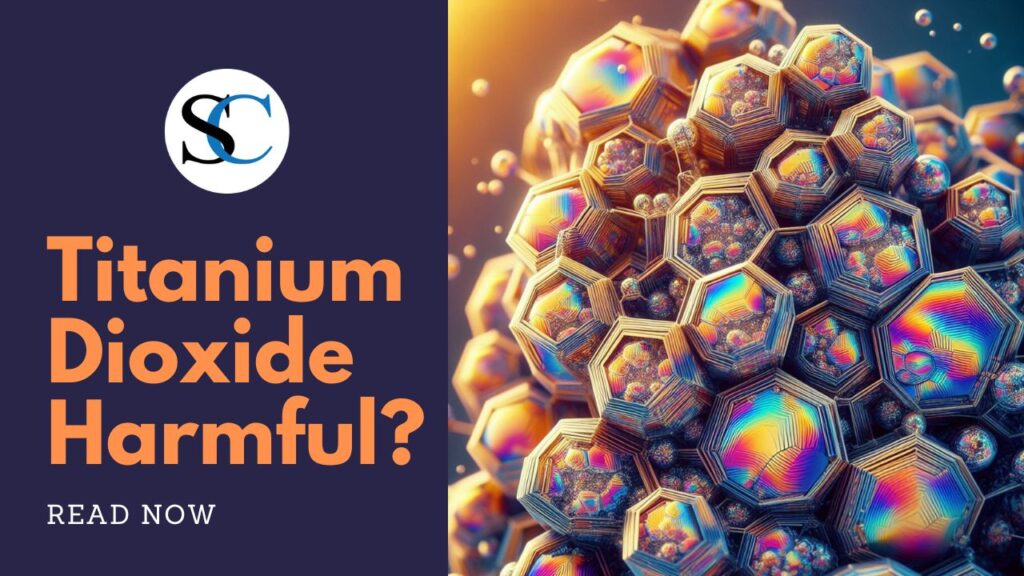Titanium Dioxide Harmful: Titanium dioxide (TiO2) is a typical fixing sneaking in numerous regular items, from sunscreen and food to cosmetics and paint. It’s the reason icing is so white and why a few confections have that lively pop of variety. Be that as it may, with its rising pervasiveness, murmurs of potential well-being chances have started to twirl. All in all, would it be a good idea for you to be stressed? We should dig further and isolate reality from fiction.
Unveiling the Science Behind the Concerns
The essential concern encompassing titanium dioxide lies in its capability to be unsafe when breathed in. Studies have shown that elevated degrees of titanium dioxide nanoparticles in the inward breath in rodents can prompt lung growth. Be that as it may, understanding the context is significant. These examinations included focused and delayed openness, far surpassing what a common purchaser would experience.
For shoppers, the greater concern may be the utilization of titanium dioxide nanoparticles in sunscreens. These nanoparticles are more modest than 100 nanometers, bringing up issues about their capacity to enter the skin. While some examinations propose this chance, proof remaining parts is uncertain. Administrative bodies like the FDA, by and large, think about the safe use of titanium dioxide.
A Look at Titanium Dioxide in Food
Titanium dioxide is a common food additive used as a whitener and opacifier. Regulatory bodies like the FDA have deemed it safe for consumption in limited quantities. However, the European Commission recently banned its use in food products due to concerns about potential genotoxicity (damage to genetic material). More research is needed to definitively understand the long-term effects of titanium dioxide ingestion.
Navigating the Debate: Titanium Dioxide Sunscreen
Sunscreen assumes a urgent part in shielding our skin from unsafe UV beams. Titanium dioxide, alongside zinc oxide, are mineral-based UV channels that actually block the sun’s beams, offering wide range assurance. While certain worries exist about nanoparticle inward breath during application, the advantages of sun security probably offset these expected dangers. Search for sunscreens formed with non-nano titanium dioxide particles to limit any potential inward breath concerns.
Titanium Dioxide Nanoparticles: A Bigger Threat?
Nanoparticles are particles with a size of less than 100 nanometers, allowing them to potentially penetrate deeper into the body. While research is ongoing, the jury’s still out on whether titanium dioxide nanoparticles pose a greater health risk compared to their larger counterparts. However, some studies suggest they might be more readily absorbed by the lungs. Choosing products that don’t contain titanium dioxide nanoparticles might be a safer option, especially if you have pre-existing respiratory conditions.
Are We Protected? Titanium Dioxide Regulations

Regulatory bodies around the world have established guidelines for the use of titanium dioxide. The FDA considers it safe for use in food and cosmetics when used within specified limits. However, regulations vary internationally, with the European Commission recently taking a stricter stance by banning its use in food products.
Staying informed about these evolving regulations is crucial for making informed choices.
Can Titanium Dioxide Cause Cancer? Understanding the Research
Titanium Dioxide Harmful: The link between titanium dioxide and cancer is a complex issue. While studies have shown a connection between inhalation of high levels of titanium dioxide nanoparticles and lung tumors in rats, the relevance to human consumers remains unclear. Current research suggests the dermal application of titanium dioxide in sunscreens poses minimal risk.
More research is needed to definitively understand the long-term effects of both inhalation and ingestion of titanium dioxide.
Finding Safer Options: Tio2 Alternatives
If you’re concerned about the potential risks of titanium dioxide, there are alternatives available.
- Look for sunscreens with zinc oxide as the primary UV filter.
- Opt for food products that don’t contain titanium dioxide as an ingredient.
- Choose cosmetics that use natural pigments for color instead of titanium dioxide.
The Takeaway: Making Informed Choices
Titanium Dioxide Harmful: While the science surrounding titanium dioxide is evolving, there’s no need to panic. For most consumers, exposure levels are likely very low. However, if you have concerns, especially regarding pre-existing respiratory conditions, exploring alternatives can provide peace of mind.
Stay informed about ongoing research and regulations, and make choices that align with your comfort level. Remember, sun protection remains crucial, so choose a sunscreen that works effectively for you, even if it contains titanium dioxide.
The key is to be aware of the potential risks and benefits, and make informed decisions based on your circumstances.





